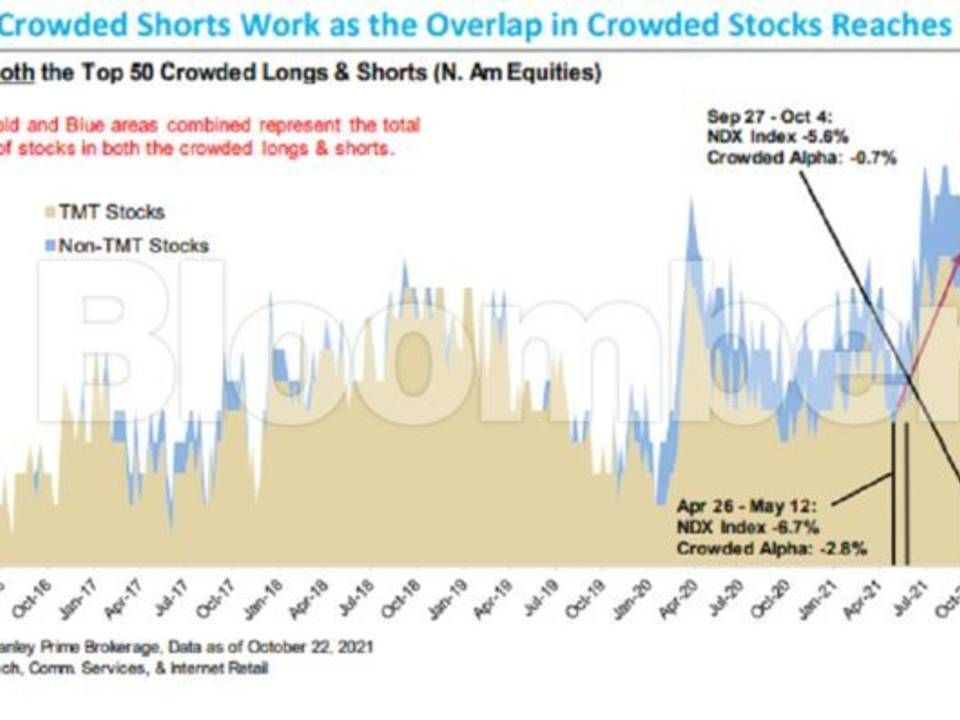Faang's gains are nothing special, quant study finds

Many Wall Street careers have been built touting the exceptional capacity of Big Tech stocks including Amazon.com Inc. and Alphabet Inc. to outrun everything else in the market.
Yet a recent study from the Singapore Management University argues the superpower of the Faang cohort is exaggerated.
The bulk of their gains since 2013 came thanks to a broader market appetite for large companies and those with strong earnings growth, according to Roger K. Loh, an associate professor of finance who studied how investment factors influence returns. The intrinsic magic or otherwise of the Faang label which includes the company formerly called Facebook Inc., Apple Inc. and Netflix Inc. has little to do with it.
Loh found that the group’s impressive total returns, at 2.6 percent a month, dwindled to an actual outperformance of as low as 0.4 percent when controlling for the impact of favorable trends in the rules-based world of factor investing.
"If we account for the fact that Faang stocks belong to the large-cap group (size factor) and the growth-stocks group (value/growth factor), the majority of the abnormal performance post-2013 can be explained," Loh said in an interview. "Their standout performance is less ‘standout’ once you see that stocks with the same styles were also standout in the post-acronym period."
The good news: It suggests active managers struggling with the Faang oligarchy can match or outperform benchmarks by buying other stocks similarly powered by the size and growth factors.
Also lifting the Faangs, Loh found, is the Covid-19 outbreak, an event that has exacerbated the appeal of companies catering to stay-at-home demand. Excluding the pandemic period, their above-factor alpha weakened further.
To Faang devotees whose criteria of success is price gains, it may not matter much what exactly is driving their share returns. Yet for managers whose performance is tied to the S&P 500, it really does matter. The growing weight of the Faang group in the index has created headaches for active funds who have underperformed because of their broader market exposures.
Whether because of concern over stretched valuations or regulatory strictures, these managers have been chronically underweight the tech cohort.
The paper, which crunched data from February 2013 to August 2021, provides hope for them in the following way: If Big Tech outperformance is increasingly determined by quant factors, then investors can net big returns by holding a diversified portfolio of stocks with similar growth bets.
For example, the VanEck Semiconductor exchange-traded fund has posted more than 900% since the start of 2013 versus around 720 percent for the Faang. The First Trust NASDAQ-100-Technology Sector Index ETF and the iShares Expanded Tech-Software Sector ETF have delivered around 650 percent and 625 percent, respectively.
"This provides greater diversification and lower volatility and can deliver similar returns compared to choosing just a few prominent stocks in that style," Loh said without naming any specific ETFs. "Fund managers are evaluated based on the alpha they generate. And if these alphas are increasingly determined using multi-factor models such as the models studied in the paper, the ultimate abnormal performance that should matter is a multi-factor alpha."
Why hedge-fund bulls and bears are crowding into the same tech stocks
Scottish manager expects upheaval in food production and looks for disruptive companies
Danish managers' Article 9 funds invest in Russian gas, mining companies and tech companies
















